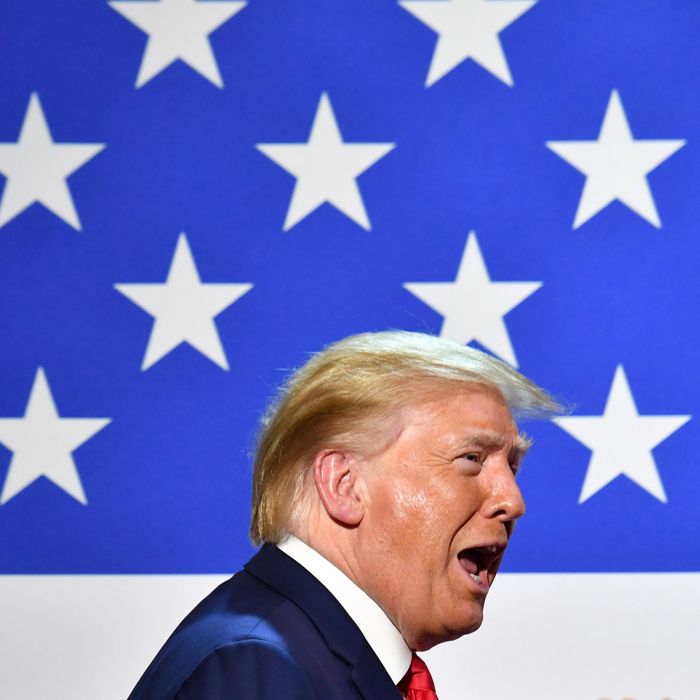
It’s no mystery that partisan polarization has recently characterized U.S. public opinion, and that said polarization has been exacerbated by the 45th president. But new job-approval numbers from Gallup really dramatize the extent to which self-identified Republicans and Democrats live in very different realities:
The latest results are based on a June 8-30 Gallup poll. While Trump’s overall job approval rating is essentially unchanged from the prior May 28-June 4 poll, it does show some improvement among Republicans, from 85% to 91%. However, the current poll also indicates the president’s approval rating has dropped among independents, from 39% to 33%, as well as among Democrats, from 5% to 2%.
The current 89-point difference between Republicans’ and Democrats’ ratings of Trump is the largest partisan gap Gallup has ever measured for a presidential approval rating in a single survey. Trump had previously registered 87-point gaps in late January and early February polls, conducted around the time of his Senate impeachment trial and ultimate acquittal.
Gallup notes Barack Obama registered an 86-point partisan approval gap in 2012, evidence that polarization hardly began with Trump. A big factor was a slow but inexorable ideological sorting-out between the two parties that consolidated nearly all conservatives in the GOP and nearly all liberals in the Democratic Party. But it’s clearly gotten more intense under Trump; that 86-point Obama gap was immediately prior to the 2012 presidential election, when you’d expect peak polarization. Just prior to the 2004 election, at the time considered a very polarizing contest, George W. Bush achieved an 82-point partisan approval gap (93 percent among Republicans and 11 percent among Democrats).
In terms of reelection prospects, perhaps the more important “gap” is between approval ratings from the president’s party and from self-identified independents. Right now Trump’s GOP/indie gap is an amazing 58 points. When Obama had that 86-point partisan approval gap in 2012, his Democratic/indie gap was a significantly lower 41 points. Yes, the GOP/indie gap for George W. Bush just prior to the 2004 election was 51 points, and he managed to win reelection. But then again, self-identified Republicans were an unusually high percentage (34 percent) of the electorate then, as compared to 27 percent who were indies. At present, according to Gallup, Republicans are 25 percent of the electorate while indies are 40 percent. So if Trump puts all his emphasis on base mobilization, it’s not going to be enough to win.
"peak" - Google News
July 07, 2020 at 03:17AM
https://ift.tt/2CguH0z
Americans Reach Peak Partisan Polarization Under Trump - New York Magazine
"peak" - Google News
https://ift.tt/2KZvTqs
https://ift.tt/2Ywz40B
Bagikan Berita Ini
















0 Response to "Americans Reach Peak Partisan Polarization Under Trump - New York Magazine"
Post a Comment